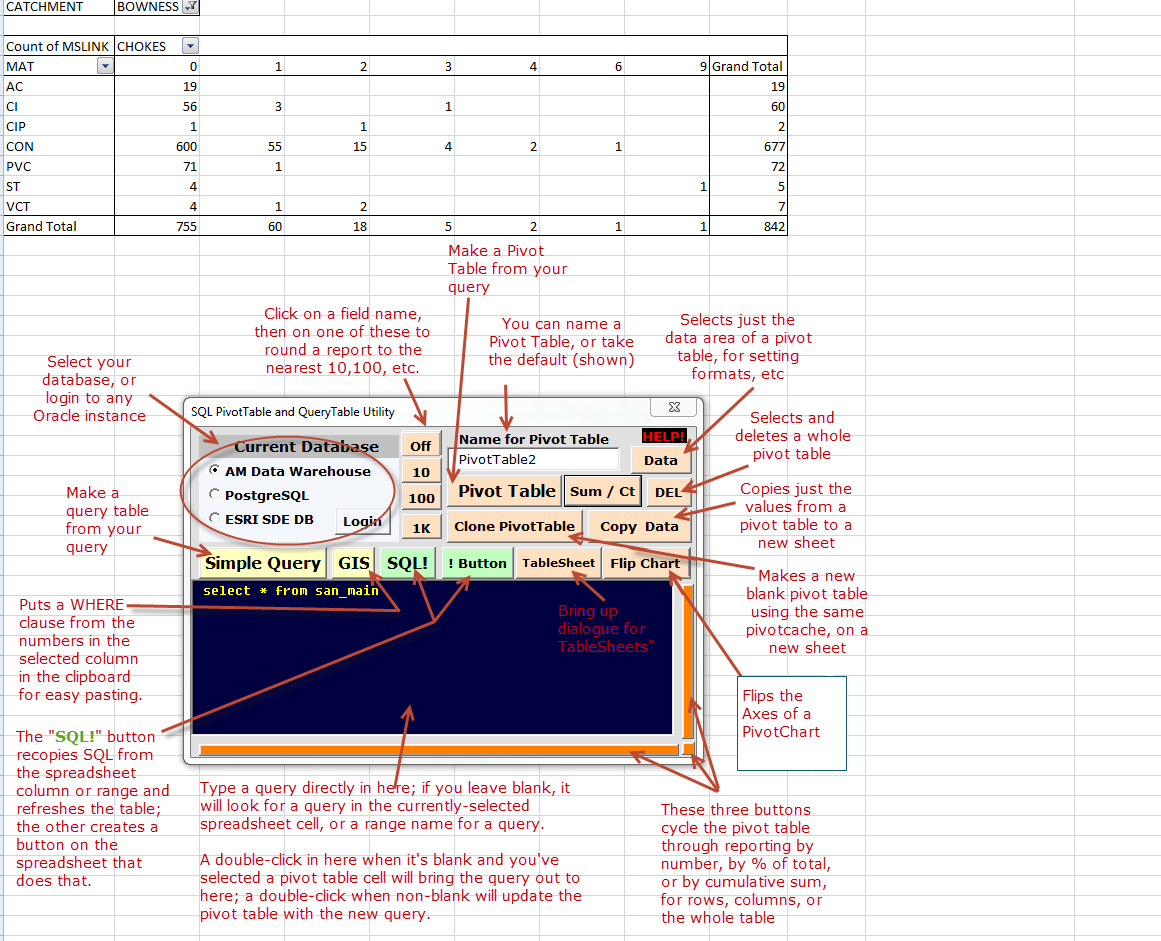
To save a few steps, I wrote an Excel Plug-In that opens up, logged into my favourite Oracle database, has a text window for pasting in your SQL query, and a single button to turn the query into an Excel Pivot Table.
The other buttons were all for very common things that people do with Pivot Tables: jumping the bottom row/column from SUM to COUNT, delete it, copy it.
I piggy-backed a whole other function onto TableWare: the TableSheet button takes you to a dialogue that makes it easy to upload an Access .MDB file up into Oracle, or other SQL database.
The software is offered with open source code. Any new user will want to change a few lines of code to make it log in to their own MS "ODBC" data source!
Available for advice, if anybody ever wants this - Microsoft "PowerQuery" may have made it partially obsolete.
When your data is coming from an SQL database, it is convenient if you can directly generate the pivot table from an SQL query, and refresh it automatically as the source data changes. A tool that makes this very easy is this Excel Add-In: TableWare in the Add-In File TableWare.xla.
Help for the Main TableWare Form
Help for the TableSheet Tools that assist with MDB files and uploads
select * from san_main
...then hitting the "Pivot Table" button after selecting cell A1 on the worksheet. The query brings in the entire 70,000 record SAN_MAIN table into the Excel pivotcache, then any number of reports breaking out sanitary mains by any of the table columns can be done with just mouse moves, no reporting code.
An overview of what TableWare does:
